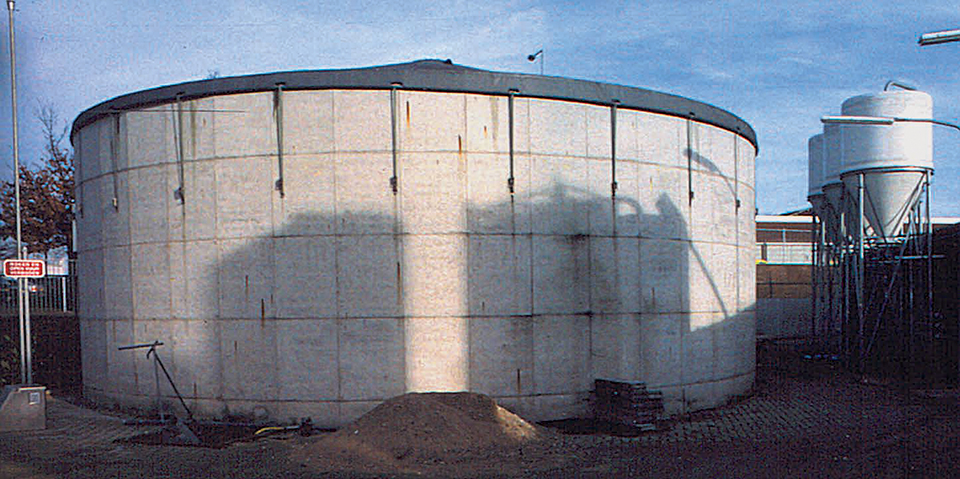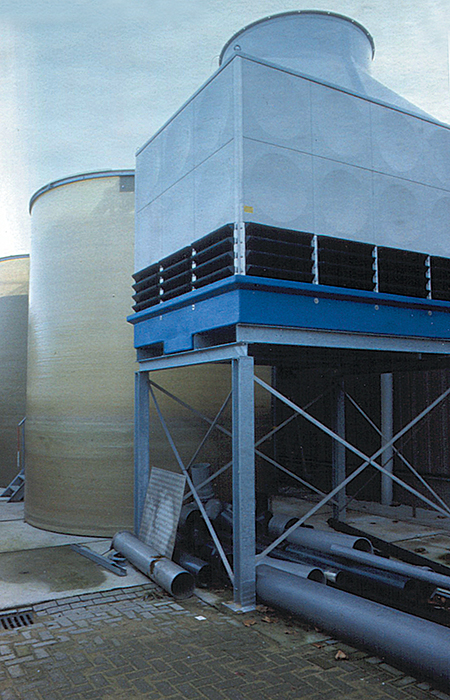Water consumption is roughly 500 liters per kilogram of fish produced

Because of the Netherlands’ climate and limited available water resources, all fish farming in the country is based solely on the use of recirculation systems. Yet during the last decade, the aquaculture industry here has grown to represent roughly 60 eel farms with annual production of 3,500 metric tons (MT), and 15 farms for African catfish that produce about 2,000 MT each year.
The largest and most advanced eel farm in the Netherlands is Nijvis, with an annual production around 1,000 MT of Anguilla anguilla. To better deal with ongoing waste issues in the country, this farm recently invested in an expanded, state-of-the-art effluent treatment system.
Environmental constraints

Holland is a small country of 40,000 square km with a very strong tradition in animal husbandry. It is still the third-largest exporting country of agricultural products in the world. A large part of its animal-production business – which includes swine, poultry, and fish – is based on the use of imported feed stuffs, not farm-grown feed.
It is not difficult to imagine that environmental problems can arise under these conditions. The limited area of arable land was often used as a dumpsite for excess manure. This resulted in elevated nitrate levels in groundwater, and excessive nitrogen deposition by air in sensitive natural areas.
The government recently corrected this situation through strict legislation that limits the amount of minerals a farmer can apply. Surface and groundwater also are strongly protected, and users of these resources have to pay high levies.
Cost of wastewater
Industries and households are charged for wastewater based on the amount of oxygen needed to break down their waste loads.
The 4.57 Nkj element in the formula accounts for the oxygen demand of nitrification. At a large farm like Nijvis, wastewater is sampled daily and water consumption is measured continuously.
System design
The water treatment system at most eel farms involves a rather simple and straightforward design, with slight individual adaptations. The recirculating flow from the fish tanks is first passed through a mechanical drum or disc filter with a mesh of 40-100 μ for removal of suspended solids, then through a biological filter for nitrification. A trickling filter is usually used for this purpose, with the advantage of efficient stripping of carbon dioxide.
Some farms, including Nijvis, direct part of the flow over a submerged filter for removal of small suspended solids. In this system configuration, accumulation of nitrate is the factor that limits production. Make-up water is added to the system to keep nitrate level below 500 milligrams per liter. This results in a water consumption of roughly 500 liters per kilogram of fish produced.
Sludge

In the biological filter of a recirculation system, most of the soluble COD and ammonia is oxidized, which reduces the oxygen demand of the effluent by approximately 30 percent. However, the sludge separated from the mechanical filter still has a substantial COD. As long as this fraction is not retained, the levy is considerable (approximately 10,000 IE per year for Nijvis).
When the solid fraction is retained efficiently, the number of IEs can go down to around 1,000 for a farm with an annual production of 1,000 MT. One IE costs U.S. $75, equivalent to U.S. $.08 per kilograms fish produced.
The sludge from a mechanical filter is not very concentrated (roughly 0.3 percent DM), and concentration is necessary for efficient storage. To tackle this problem, Nijvis installed a “belt filter” together with a flocculation unit to treat the solid waste. To reduce water consumption, a denitrification unit was concurrently installed in a separate loop.
Advanced effluent treatment
All the sludge from the different mechanical filters is fed to a mixing unit, where a flocculant is added. The mixture is fed to a belt filter (Fig. 1), with a continuously revolving fabric from which the concentrated sludge is scraped. The 3 percent DM sludge is fed to a storage unit and applied as fertilizer at regular intervals.
The remaining liquid fraction is discharged to the sewer. Figs. 2 and 3 show the water before and after treatment. Little solid material remains after treatment. As a bonus, a large part of the phosphorus is precipitated in the sludge.
Denitrification is accomplished in a bypass fed directly with system water to two large tanks filled with floating beads moved by a propeller. The carbon source for denitrification is methanol, which is stored in an underground tank. The effluent of the reactors goes through a drum filter and is returned to the system.
Although sludge from the system could be also a good source to feed a denitrification reactor, methanol was chosen due to ease of operation. A newly installed cooling unit was added near the denitrification reactors. When reducing water consumption during the summer, overheating of the system becomes a problem. A farm the size of Nijvis has heat production through animal metabolism of roughly 400 kw.
Conclusion
Investment in effluent treatment has helped control waste materials at the Netherlands’ largest eel farm. The equipment used is well known for other applications, and there is nothing revolutionary involved. The trick to its successful use was to make the individual components work together smoothly and continuously in the fish-farming environment.
(Editor’s Note: This article was originally published in the June 2001 print edition of the Global Aquaculture Advocate.)
Now that you've finished reading the article ...
… we hope you’ll consider supporting our mission to document the evolution of the global aquaculture industry and share our vast network of contributors’ expansive knowledge every week.
By becoming a Global Seafood Alliance member, you’re ensuring that all of the pre-competitive work we do through member benefits, resources and events can continue. Individual membership costs just $50 a year. GSA individual and corporate members receive complimentary access to a series of GOAL virtual events beginning in April. Join now.
Not a GSA member? Join us.
Authors
-
Andries Kamstra
RIVO – Netherlands Institute for Fisheries Research
Wageningen-UR, The Netherlands -
Ep Eding
Department of Fish Culture and Fisheries
Wageningen-UR, The Netherlands -
Oliver Schneider
Department of Fish Culture and Fisheries
Wageningen-UR, The Netherlands
Tagged With
Related Posts

Innovation & Investment
American Unagi brings eel farming back ‘home’
Sara Rademaker launched American Unagi to shift eel farming to American soil, where the eels are from. Why? Because of the novelty, and because she saw an opportunity to do things better.

Intelligence
A brief look at genetically modified salmon
If approved by FDA, fast-growing genetically modified salmon will provide a safe and nutritious product similar to other farmed Atlantic salmon.

Responsibility
A helping hand to lend: UK aquaculture seeks to broaden its horizons
Aquaculture is an essential contributor to the world food security challenge, and every stakeholder has a role to play in the sector’s evolution, delegates were told at the recent Aquaculture’s Global Outlook: Embracing Internationality seminar in Edinburgh, Scotland.

Health & Welfare
A holistic management approach to EMS
Early Mortality Syndrome has devastated farmed shrimp in Asia and Latin America. With better understanding of the pathogen and the development and improvement of novel strategies, shrimp farmers are now able to better manage the disease.


